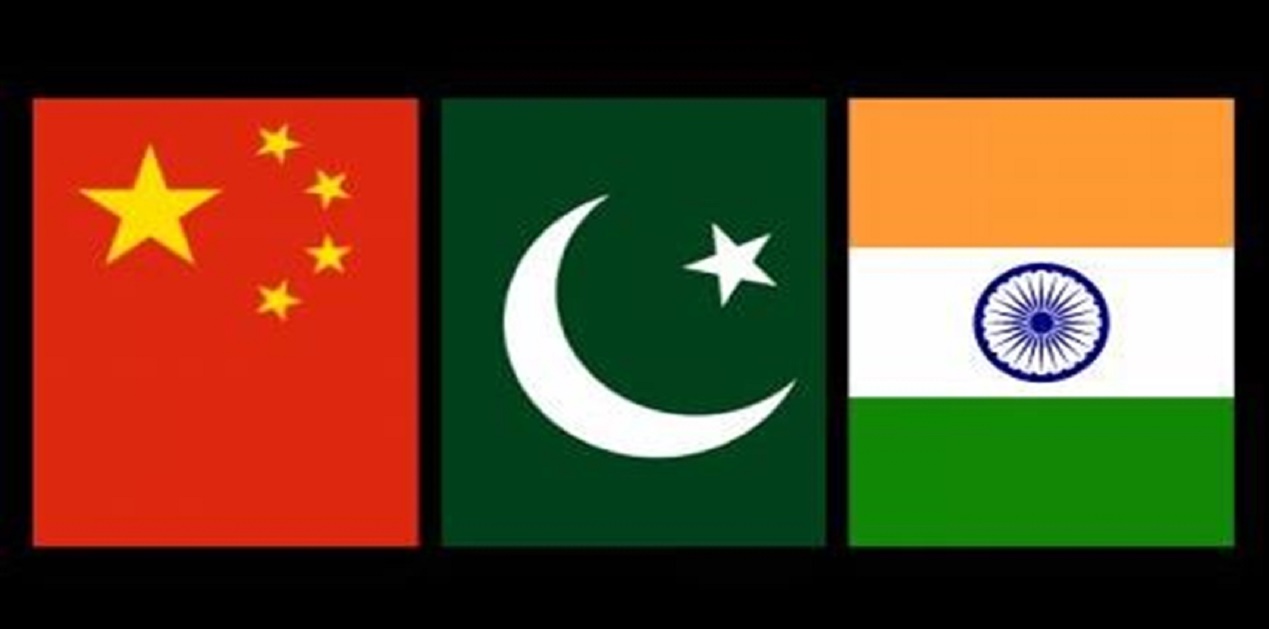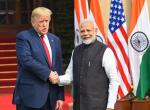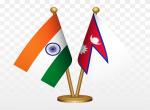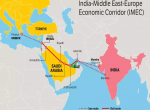The growing China-Pakistan nexus raises the threat to India. Their strategic and territorial interests have been cemented by the China Pakistan Economic Corridor (CPEC). With the flow of Chinese military power into Pakistan, China veritably straddles India, with its armed forces present on our northern, eastern and western borders. This not only raises the real spectre of a ‘two-front’ war, but positions China to play a role in Kashmir and the region. Both countries must therefore be viewed as potential threats.
It needs to be kept in mind that, since 2010, Pakistan is the only country with which China has an “all-weather strategic partnership”. The relationship is also the only one described as: “higher than the highest mountains, deeper than the deepest ocean and sweeter than honey!” The only other country with which China has a special category of strategic partnership is Russia.
Since 2015, the CPEC has brought China and Pakistan even closer. It was the first leg of Chinese President Xi Jinping’s flagship Belt and Road Initiative (BRI) to get operationalised, knitting their economic development and fusing their military capabilities.
In this context, the remark made privately in late 2015 by a Chinese academic and expert, who is often called to brief the Chinese Communist Party (CCP)’s Politburo on Pakistan and Afghanistan affairs, is especially relevant. His remarks give an insight into Beijing’s view of the relationship. Asked what Beijing hopes to gain from the CPEC considering that Pakistan is not in sound financial condition, he replied: “You know, till now we have been purchasing the Pakistanis. Now, we are going to buy Pakistan!” Later, in another private discussion about China’s internal situation and the pressure being exerted by the United States, a senior Chinese cadre confided that as long as Xi Jinping is China’s ‘leader’ the BRI will remain a priority for the country.
Since April 2015, when the CPEC was announced, China’s animus towards India has increased. The newfound assertiveness of Xi Jinping’s foreign policy has meant that China’s earlier practice of ‘managing’ contentious issues, or setting them aside for being dealt with later, has been discarded in favour of a more direct and aggressive approach. This assertiveness is becoming more apparent as China’s comprehensive national strength grows.
From the onset of Sino-US tensions in 2018, China has visibly become more confident and willing to confront the United States in pursuit of its national agenda. Xi Jinping’s calls for “rejuvenation of the great Chinese nation” and advocacy of the concept of ‘a common destiny for mankind’ as well as the ‘Chinese model of governance’, especially in the midst of the Covid pandemic, are almost reminiscent of Mao’s policy of exporting revolution!
The ‘Rejuvenation of the great Chinese nation’ impacts India more directly than is commonly understood. It essentially means “the recovery of territories that China feels it has lost through the imposition of unequal treaties by hostile foreign powers”. China’s constant refrain while commenting on the border issue -- that it is a colonial legacy left behind by history -- flows from this narrative.
For India, the implication is that China is negotiating to ‘recover’ Indian territories that it claims namely, Aksai Chin, Ladakh, Jammu and Kashmir, Arunachal Pradesh and Sikkim. The issue of ‘stapled visas’ to residents of Jammu and Kashmir and Arunachal Pradesh despite India’s protests reinforces this. As its national strength grows, China is becoming more aggressive on the border issue, indicating that these are areas of potential conflict. Had India been alert to this, China’s military aggression and the pressure it has put on India since May 2020 could have been thwarted.
At China’s 18th and 19th Party Congresses in 2012 and 2017, Xi Jinping announced ambitious goals for his country. His declaration that by 2025, China would enter the ranks of the world’s most technologically advanced nations and by 2049 it would be “a power with pioneering global influence” put the United States on alert that it plans to rival, if not surpass, the world’s leading power! The US reaction was swift. It specifically targeted China’s technology sector, setting it back by at least 5 years. Some senior Chinese cadres said in confidence that it would have been better had Xi Jinping not made these declarations publicly.
Despite mounting US pressure on multiple fronts, Xi Jinping and the Chinese Communist Party (CCP) remain undeterred. Successive nationwide campaigns have been launched to infuse the people with nationalism, reinforce party ideology and self-confidence and ensure the CCP’s monopoly on power. China’s stress on self-reliance in the technology sector is pronounced. The 14th Five Year Plan and Long Range - 2035 documents – approved by the Fifth Party Plenum in October 2020 and plenary sessions of the National People’s Congress (NPC) and the Chinese People’s Political Consultative Conference (CPPCC) in March 2021 – clearly indicate that China is not scaling back its ambitions. These are expansive programmes which include a focus on innovation and the development of cutting-edge technology in frontier sciences and the modernisation of the People’s Liberation Army (PLA).
It is clear that China’s ambitions far outweigh those of Pakistan. Pakistan’s interests are comparatively narrow. The Pakistan army unequivocally supports the CPEC, indicating its close collaboration with China’s security and military establishments, which is why the opposition has been unable to dent it. It is because of the Pakistan Army’s direct support to CPEC, most of whose projects are located in the Pakistani heartland where the more conservative elements of its Islamic society reside, that friction has been contained. Little enclaves of Chinese workers whose consumption of pork, alcohol and other proclivities go against the tenets of Islam are a constant source of tension. Video clips and reports of clashes between the two have been suppressed; but resentment lingers.
China clearly sets the agenda. It probably views Pakistan as a junior partner, but certainly one that is important enough for its strategic ambitions to make huge investments and secure its enduring influence. As China’s strategic and financial investments in Pakistan have grown, so too has its influence and interest in the country. Having staked his personal prestige on the BRI and CPEC, Xi Jinping will not allow Pakistan to sink beyond a point.
China and Pakistan both share a common objective: to prevent India’s rise. A paper published in October 2020 by Hu Shisheng, who heads the South Asia Affairs Department of the Chinese Institutes of Contemporary International Relations (CICIR), an important think tank that is directly subordinate to China’s Ministry of State Security -- its foreign intelligence arm -- is revealing. This unusually frank appraisal of Sino-India relations appeared in CICIR’s official publication and was soon followed up in mid-December by another article in the CCP-owned Global Times. Both articles certainly had high-level official approval. Hu Shisheng stated that ever since China got ‘liberated’ and India became independent, a military showdown between the two was inevitable. He said India’s rising international status since 2014 was a major contributory factor for the present crisis. He anticipated an uneasy and tense period ahead in Sino-India relations with occasional, even major, clashes between the armed forces -- including exchanges of fire -- till they reach their respective ‘red lines’ and settle on a Line of Actual Control (LAC). He expected that India would attempt to frustrate China’s rise, including by disrupting groupings like the SCO and BRICS from within.
Since April 2015, when Xi Jinping announced the CPEC in Islamabad, there has been a pronounced shift in China’s policy towards India. This is particularly evident on the issue of J&K, on which Beijing had maintained ambiguity for decades. By pursuing the CPEC and making enormous investments in it, China ignored India’s sovereignty claims on PoK, Gilgit, Baltistan and the Shaksgam Valley and accorded de facto acknowledgement to Pakistan’s claim over these territories. In a bid to secure its military and strategic interests Beijing began urging India at official and unofficial meetings, including with opinion-makers and think-tanks, that it should ‘ease tensions with Pakistan, resume talks with Pakistan, resolve the Kashmir issue and then look to improving ties with China’. This stance has persisted. After India revoked Article 370 in August, 2019, China raised the issue in the UNSC on three occasions and could well do so again, indicating its willingness to strain ties with India.
That China is prepared to intervene militarily if it perceives a threat to the CPEC or its assets became clear in 2016, with the establishment of the People’s Liberation Army (PLA)’s Western Theatre Command, as part of the restructuring and reorganisation of its army. The Western Theatre Command is the largest of China’s five Theatre Commands and merges the two former military regions of Lanzhou and Chengdu. It incorporates the Qinghai region, which facilitates the training of troops in high altitudes and acclimatizing them for rapid induction into Tibet. The operational tasks allotted to it are significant. They include “protecting China’s borders, eliminating threats in Xinjiang and Tibet, as well as in Afghanistan and other states that host training bases for separatists and extremists and protecting the Chinese workers and assets of the China-Pakistan Economic Corridor”. The Western Theatre Command is a very real and potent threat for India.
The military component of the CPEC has been clear from the beginning. These include the fibre-optic cable linking the headquarters of the PLA’s South Xinjiang Military District in Kashgar initially to Rawalpindi, now being extended to include Islamabad, Karachi and Gwadar. The uninterrupted pace of development of the Gwadar port, after China was granted “sovereign rights”, highlights its importance to China. China has an electronic eavesdropping station near Gwadar to monitor naval and shipping activities in the Arabian Sea as far as the Gulf of Aden. China’s military media already refer to Gwadar port as a “logistics base” and Karachi as a “naval base”! China’s Naval Base at Djibouti elevates the maritime threat. Plans also provide for linking the Punjab Railway with the South Xinjiang railway, providing seamless military transport capability supplemented by the proposed railway line and highway from Karakoram to Gwadar.
The Intelligence establishments of China and Pakistan have developed very close ties over the decades. This was observed during the clandestine flights in connection with the nuclear technology-for-missiles deal between North Korea and Pakistan, brokered by China. These ties have been raised with the posting of a Pakistan ISI Colonel in the PLA General Staff Department in Beijing. Chinese intelligence collaborates closely with its Pakistani counterpart to detect, identify and, at times just spirit away, Uyghurs residing in Pakistan into Xinjiang. On occasion, they request Pakistani assistance. Collaboration obviously extends to other areas, like the clandestine development of tactical nuclear weapons.
While close Sino-Pak ties in the diplomatic, economic, military and nuclear fields and the development of weapons systems is fairly well documented, their cooperation in the maritime domain is becoming a greater and lethal concern. In addition to collaborating in building frigates, there is now mention of collaboration on submarines and Unmanned Underwater Vessels (UUVs). If China supplies these to Pakistan they will be based at Gwadar, Karachi and Jiwani, increasing the vulnerability of India’s western coast and the Arabian Sea. Reflecting official level thinking, China’s military media in 2019 mentioned that China might sell its first aircraft carrier, Liaoning, to Pakistan, once its fourth aircraft carrier is ready. They have also mentioned that Chinese air force fighter aircraft could be given to Pakistan in event of the outbreak of hostilities with India.
China’s efforts to isolate India, restrict its rise, and expand Chinese influence in our neighbourhood will continue. India must expect increased Sino-Pakistan collusion on issues like Kashmir, blocking its demand for the designation of persons like Masood Azhar, Zaki-ur-Rahman as international terrorists, etc. The convergence of Sino-Pak interests on strategic and territorial issues points to increased and enduring Chinese military pressure on India, as presently seen in Ladakh. China could well open hostilities through Pakistan, creating a “two-front war” situation for India.
(The paper is the author’s individual scholastic articulation. The author certifies that the article/paper is original in content, unpublished and it has not been submitted for publication/web upload elsewhere, and that the facts and figures quoted are duly referenced, as needed, and are believed to be correct). (The paper does not necessarily represent the organisational stance... More >>
Image Source: https://theaseanpost.com/sites/default/files/2021-04/3PM-MON-05042021-AN.jpg











Grt info
Post new comment